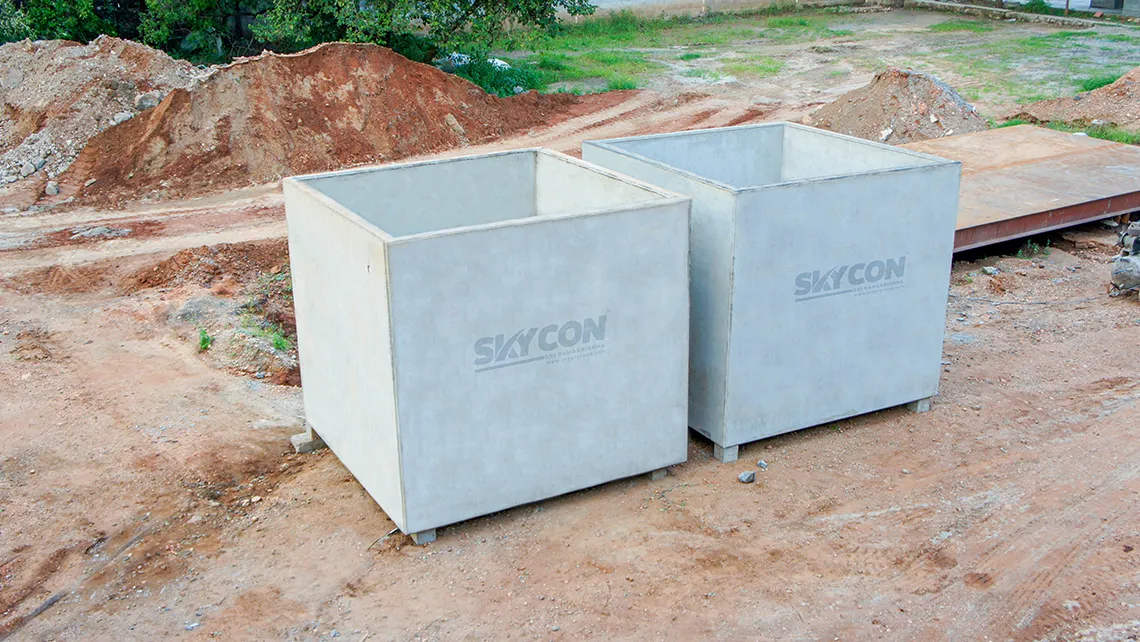PRECAST WATER TANKS - THE SMART CHOICE FOR SUSTAINABLE WATER STORAGE
Water storage is a critical component in residential, commercial, and agricultural
settings. With increasing awareness of water conservation and the need for
efficient storage solutions, precast water tanks have emerged as a popular
choice. These tanks offer numerous benefits, from durability and ease of
installation to environmental sustainability. In this blog post, we'll delve into the
advantages of precast water tanks, explore their various applications, and
provide insights into why they might be the perfect solution for your water
storage needs.
1. Durability and Strength
Precast water tanks are made from high-quality
concrete, providing exceptional strength and longevity. They can
withstand harsh weather conditions, resist corrosion, and maintain their
structural integrity over time, making them a reliable choice for long-term
water storage.
2. Cost-Effective
While the initial investment in precast water tanks might
be higher compared to some other materials, their long-term cost
efficiency is unmatched. Reduced maintenance and repair costs, coupled
with their extended lifespan, make them a financially sound investment.
3. Quick and Easy Installation
One of the significant advantages of
precast water tanks is the speed and ease of installation. Since they are
manufactured off-site and delivered ready for installation, the on-site
construction time is significantly reduced. This minimizes disruption and
allows for quicker project completion.
4. Customization and Versatility
Precast water tanks come in various
sizes and shapes, and they can be customized to meet specific
requirements. Whether you need a small tank for residential use or a large
one for agricultural purposes, there’s a precast solution that fits your
needs.
5. Environmental Benefits
Precast concrete is an environmentally friendly
material. The production process involves minimal waste, and the tanks
themselves are recyclable. Additionally, these tanks can be designed to
harvest rainwater, promoting sustainable water management practices.
6. Improved Water Quality
The non-porous nature of concrete helps in
maintaining better water quality by preventing the growth of algae and
bacteria. This makes precast tanks a hygienic option for storing potable
water.
1. Residential Water Storage
For homeowners, precast water tanks
provide a reliable solution for storing water for daily use, rainwater
harvesting, and emergency reserves. Their aesthetic flexibility allows
them to blend seamlessly into residential environments.
2. Commercial and Industrial Use
In commercial and industrial settings,
large-scale water storage is often necessary for operations. Precast tanks
can store process water, fire protection water, and wastewater, supporting
various business needs efficiently.
3. Agricultural Applications
Farmers and agricultural businesses benefit
greatly from precast water tanks. They can be used for irrigation, livestock
watering, and storing water for crop spraying, ensuring a consistent water
supply throughout the year.
4. Municipal and Infrastructure Projects
Municipalities use precast water
tanks for stormwater management, potable water storage, and sewage
treatment. Their durability and large capacity make them ideal for public
infrastructure projects
1. Site Preparation
The first step is to prepare the site where the tank will
be installed. This involves clearing the area, leveling the ground, and
ensuring a stable foundation.
2. Delivery and Placement
The precast water tank is delivered to the site
and carefully placed in the prepared location using cranes or other lifting
equipment. The precise manufacturing process ensures that the tank fits
perfectly into the designated spot.
3. Connecting Systems
Once in place, the necessary plumbing and piping
systems are connected. This might include inlets, outlets, overflow pipes,
and connections to rainwater harvesting systems or municipal water
supplies.
4. Backfilling and Final Touches
After the tank is installed and
connections are made, the area around the tank is backfilled and
compacted. Final touches might include landscaping or other aesthetic
considerations to integrate the tank into its surroundings.
Precast water tanks offer a robust, efficient, and sustainable solution for water
storage across various applications. Their durability, cost-effectiveness, and ease
of installation make them a preferred choice for homeowners, businesses,
farmers, and municipalities alike. By opting for a precast water tank, you invest
in a reliable water storage solution that supports sustainable water management
practices and ensures a steady supply of water for your needs.
Ready to explore the benefits of precast water tanks for your next project?
Contact us today to learn more about our range of high-quality, customizable
tanks and how they can meet your specific requirements. Let's work together to
build a sustainable future, one drop at a time.

